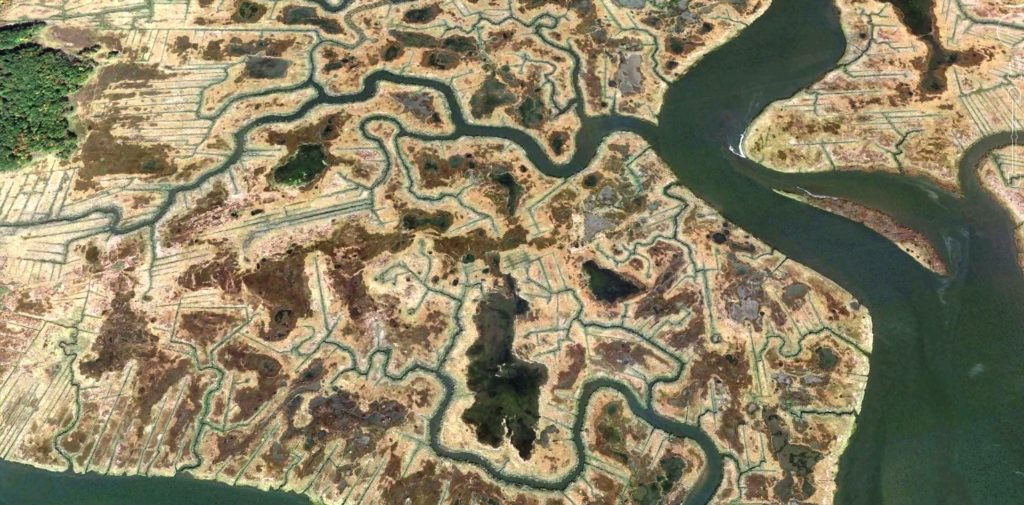Conservation organizations in the Great Marsh have been noticing concerning trends in the region’s salt marshes. A variety of experts across the northeastern US have noticed changes including marshes getting wetter, plant community shifts, and large algal blooms in marshes. Great Marsh Coalition partners have been monitoring these changes in salt marsh habitats and trying to understand the scope of the problem, its underlying causes, and potential future consequences.
We have identified two related manifestations of concern: (1) increased impounding of water on marsh surfaces, and (2) excessive draining. Both result in marsh subsidence and loss of vegetation; thereby impairing the ability of the tidal marsh to keep up with the rapidly increasing rate of sea level rise. The US Fish and Wildlife Service and partners have piloted a few promising techniques to address these impairments.
Artificial impounding is wide spread throughout the Great Marsh, covering hundreds of acres in the Great Marsh and other New England marshes. The scale of this impairment and the rapid pace of change observed in other New England states and in some parts of the Great Marsh necessitate a coordinated big-picture, long-term strategy. We believe the window of opportunity to address these impairments is narrow. Under the leadership of the US Fish and Wildlife Service, we have assembled a multi-disciplinary team that will be working toward restoring more natural wetting-drying hydrology to tidal marshes.
As a part of this effort, a new draft Habitat Management Plan (HMP), which includes an Environmental Assessment (EA) and Fire Management Plan (FMP) was produced in 2023. The Habitat Management Plan provides a long-term vision and specific guidance on managing priority species, habitats, and ecosystems at Parker River and Thacher Island National Wildlife Refuges. More on the plan, process, and upcoming announcements can be found here.
Project Status:
Active
Project Lead:
US Fish and Wildlife Service

